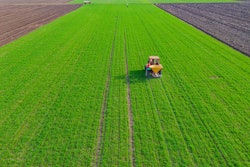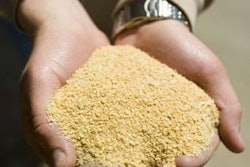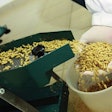
War in Ukraine has decreased supply and increased price of phosphate for animal feeds
In my previous blog, I mentioned that I would share my thoughts on how to address the explosive increase in phosphate prices due to the ongoing war in Ukraine. And given the way things are evolving, some authorities measure the time back to normality in years and not months.
Thus, in commercial terms, we need to act now with the knowledge we have already accumulated, while research institutions try to find new ways to improve phosphorus nutrition. With all that in mind, I offer the following four suggestions for discussion.
-
Do nothing
Although this might appear counterintuitive to the scope of this blog, some formulas are not worth tinkering with. For example, layer formulas should not be touched, as anything that has to do with bone/eggshell formation is already at a fragile balance.
-
Use NRC minimum levels
During good times, safety margins were inexpensive and a sure way to avoid being blamed for being cheap or the (unjust) cause of any health problem. Right now, such a luxurious approach is no longer warranted, especially for phosphorus that is not heat/storage sensitive.
-
Increase phytase dosage
In theory, one dose of phytase will release about 0.1% extra phosphorus (be it available for poultry or digestible for pigs). Some products might do better or worse than that. During the previous spike in phosphate prices, it was an axiom that a second similar dose of phytase will release about 0.05% additional phosphorus (50% of the first dosage). Assuming a corn-soy diet contains about 0.3% total phosphorus and only two-thirds of this figure (0.2%) are bound to phytate and thus susceptible to the act of phytase, with two doses of the enzyme phytase, we already release 75% of the bound phosphorus. Adding extra doses of phytase are questionable as we reach maximal biological efficiency (or inefficiency), although some recommend adding up to 10 times the normal dose (but at what cost?) to get as much as possible out of the remaining 0.05% bound phosphorus.
-
Target non-sensitive feeds
It is generally assumed that during the last one-third of the growing period, a broiler or pig will consume two-thirds of total feed allowance. Thus, it merits targeting these two high-volume feeds as prime candidates for reducing phosphate additions. Indeed, research conducted at Kansas State University during the 90s at the laboratory of Dr. Joe Hancock revealed that finishing pigs require little in terms of additional phosphate in their feeds. In fact, my M.Sc. thesis included part of these trials. Nevertheless, not all farms are identical and if such extreme measure is followed, then it is best to discuss it with your nutritionist.
I would add a fifth option – that of using wheat instead of corn, as wheat contains phytase, making its phosphorus more available/digestible to the animal, but wheat is equally scarce for the same reasons. In fact, many countries save remaining wheat supplies to ensure human consumption self-sufficiency.

















